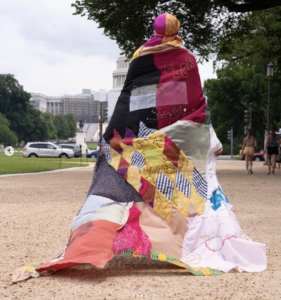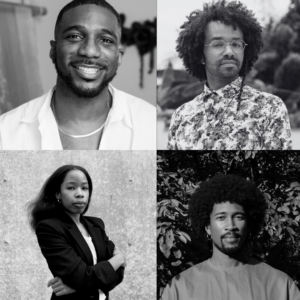A day celebrating Black artists and your hard work throughout the year! We’ll also be joined by artist Cory Perry for a special performance.
The South Side Community Art Center has hosted innovative, ground-breaking, and forward exhibitions and programs throughout 2023, which would not have been possible without the array of Black ingenuity and talent from the artists we’ve been incredibly grateful to work with!
Join us for our first annual Black Artist Reception, celebrating the amazing artists we’ve supported and collaborated with over the year! We’re thrilled to kick off this program with a performance by current exhibiting artist Cory Perry, an Artist Talk moderated by current exhibitions curators Gervais Marsh and Rikki Byrd, with artists Cory Perry and Nnaemeka Ekwelum, followed by a reception with light bites and bubbly! 🥂

Current exhibiting artist Cory Perry will perform: how my Mother cried when her flowers bloomed.
This performance is an ode to resilience, an embrace of memories, and a testament to the enduring spirit that emerges from the confluence of grief and celebration. Black Artist Reception attendees are invited to watch the performance, which will be screened from our Burroughs Gallery, SSCAC’s Instagram Live.
One meaning of a procession is “continuous forward movement.” Another definition is “a ceremonial or funeral procession.”
I’m captivated by how these two, forward movement and death, are intertwined and what can be gleaned. “how my Mother cried when her flowers bloomed” is a participatory art performance/procession that symbolizes living with grief and celebrating life while in the mundane world. I don’t believe that grief is ‘baggage’ we carry along, rather, it looks like an intangible companion that moves with us through life. Grief, as a queer physician, prompts introspection by asking “how can we navigate these physical and mental spaces without the people closest to us?”
The performance will begin at the artist’s dwelling place in Chicago, serving as a symbolic starting point. From there, it unfolds as a procession to The Southside Community Art Center gallery space, inviting the audience to journey alongside the artist through the intricacies of sorrow and celebration. This performance piece delves into the intricate layers of queer grief, highlighting the mundane spaces it appears, inviting the audience to explore the diverse facets of grief within the LGBTQ+ community and the methods of transcending its barriers.
Grief is not something to overcome but a companion to embrace throughout our life. It helps us navigate the delicate balance between mourning the loss and cherishing the legacy of departed loved ones as motivation to keep moving forward.





